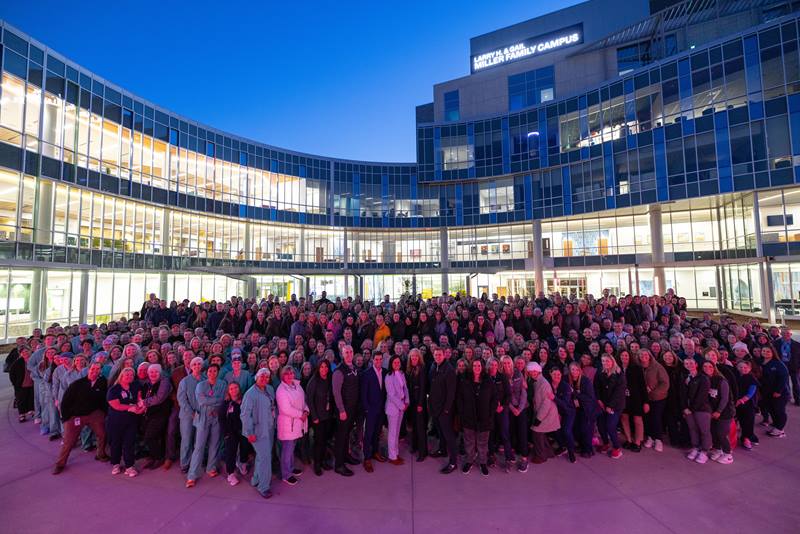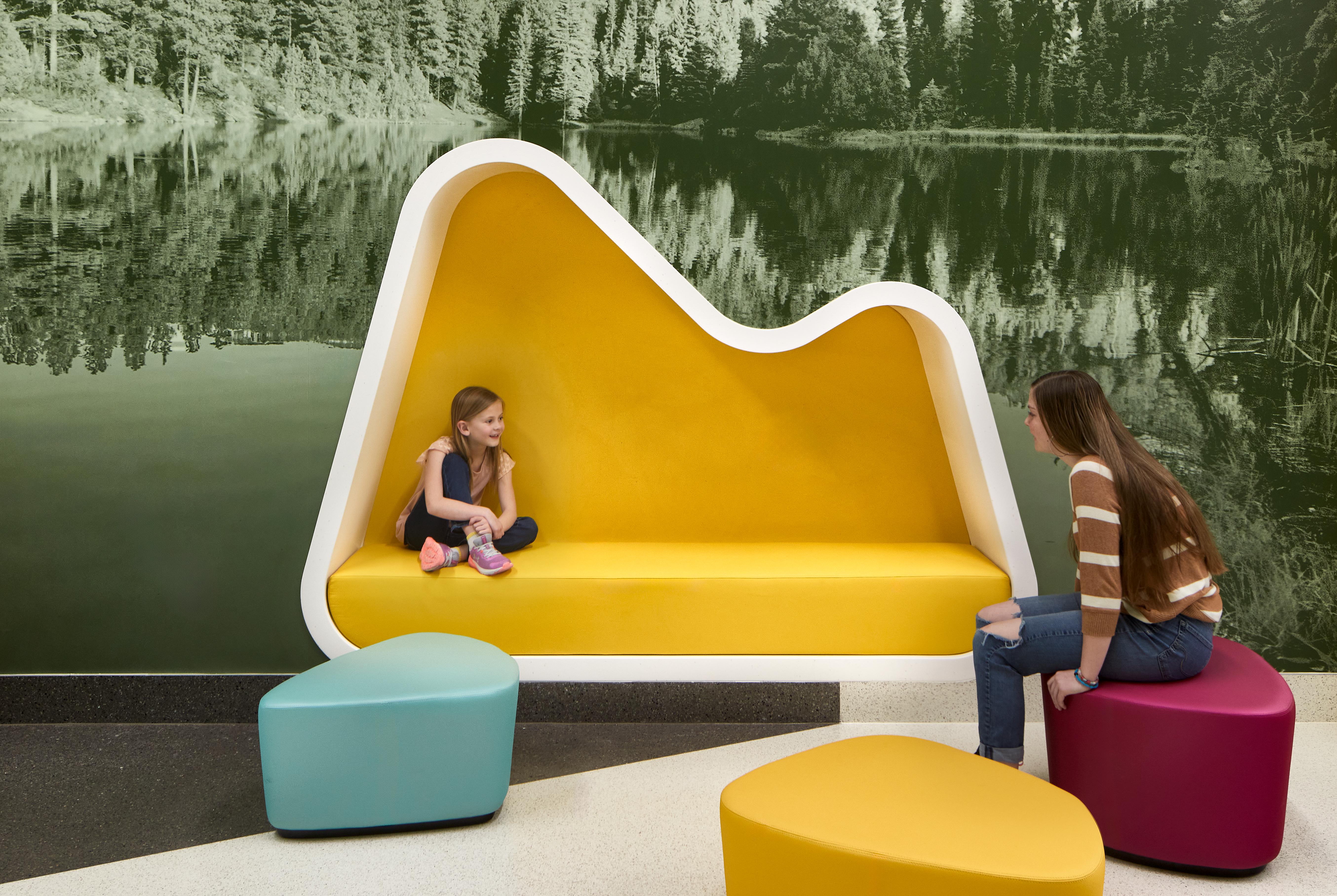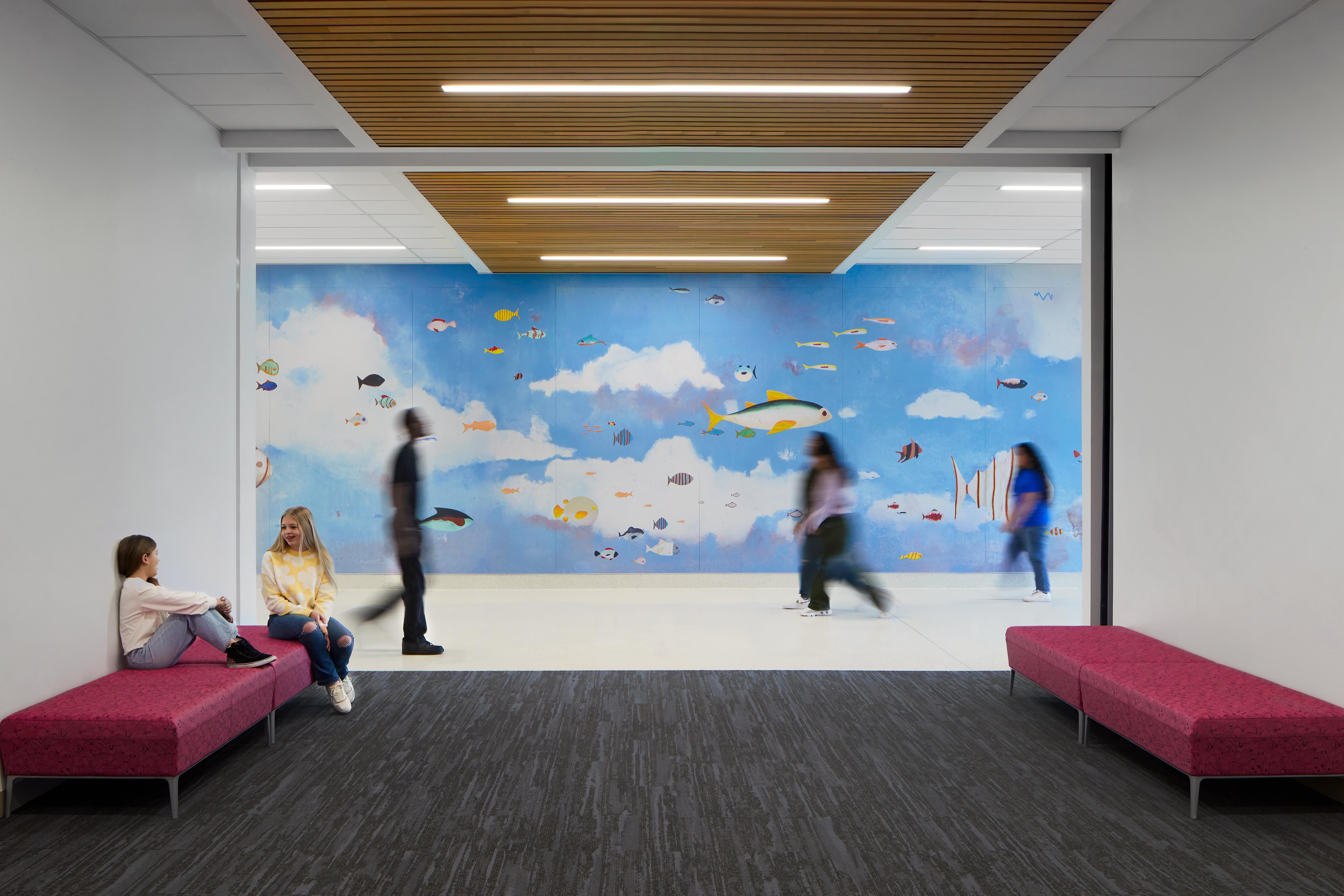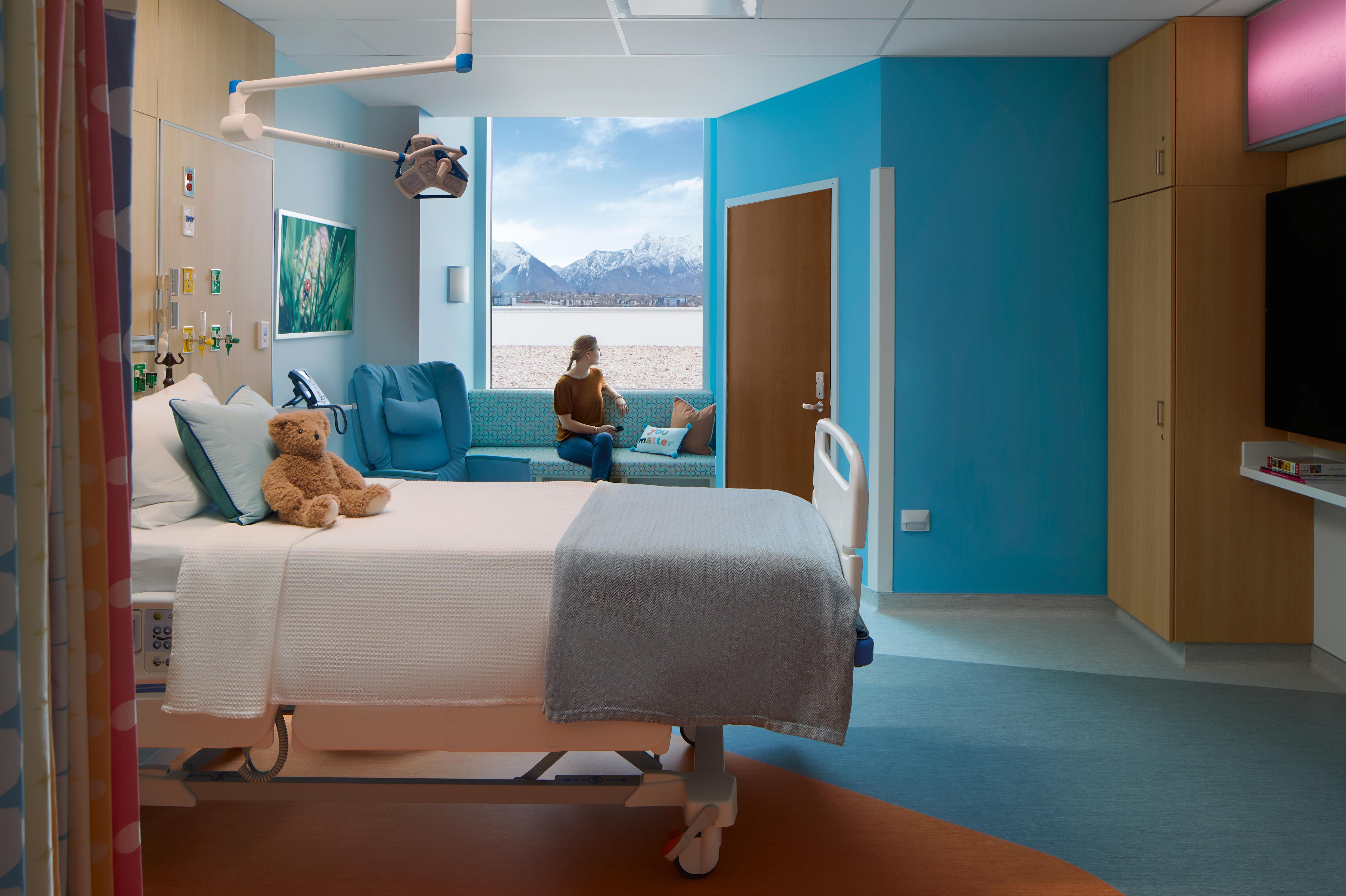Inside Intermountain Health’s new children’s hospital in Utah
Officials say the new campus is designed to be inviting for children and capable of expanding as needed. Intermountain officials talked with us about the new facility.
When Intermountain Health opened up its new children’s hospital, Lisa Paletta wanted feedback from a critical audience: kids.
Caregivers gather outside Intermountain Health's new children's hospital in Lehi, Utah. The hospital opened in February.

Paletta is the president of the new Intermountain Primary Children’s Hospital, Larry H. & Gail Miller Family Campus. When the hospital opened last month, Paletta tells Chief Healthcare Executive® that she asked for reviews from the younger visitors.
“Anytime we see children in the hallway, I ask them: Is this hospital children's approved? What do you guys think? And they point to different things that they love,” Paletta says.
It’s not a small point. With children already dealing with an illness, it can be uncomfortable coming into the hospital. Paletta says the hospital is designed to be “inviting for children.”
The design includes bright colors and other fun elements, along with a “theme of discovery,” Paletta says, including images of bears and fish for kids to spot.
“That really is intentional,” she says. “Getting the kids to come in the building, and to reduce their anxiety by the color and playful features is … making it feel like a fun place, rather than anything that is scary.”
The Miller Family Campus is the second campus of Intermountain’s pediatric hospital, and it’s based in the fast-growing city of Lehi, about 30 miles from Salt Lake City, home of the system’s first children’s hospital. Intermountain officials say the new hospital offers more access and shorter drives for families, and boasts a host of features aimed at improving pediatric care.
The new, five-story hospital is the jewel of a fundraising campaign of more than $600 million to improve children’s healthcare.
“It’s so beautiful. It'll be so welcoming for families,” says Katy Welkie, CEO of Intermountain Primary Children’s Hospital and vice president of Intermountain Children’s Health. “It feels like a children's hospital. And that's the magic we wanted.” (The story continues below.)
‘A huge deal for families’
The Miller Family Campus includes the 486,000-square-foot hospital, an outpatient center, trauma center, a behavioral health unit and medical office building.
About half of the families going to Intermountain’s children’s hospital in Salt Lake City are traveling an hour or more, so the new campus in Lehi offers a much easier trip for parents and kids. Paletta says the goal is improving access to both pediatric campuses.
“It’s a huge deal for families,” she says.
“Being able to ease that burden of not having to travel as far makes a huge impact on the families,” Paletta says. “Having a sick child is hard enough. So anything we can do to help bear that burden with them … we're really grateful to be able to offer this hospital to this community.”
The hospital offers other features to make families more comfortable, including a Ronald McDonald family room for parents to get a break or talk to other families.
A look inside Intermountain Health's new children's hospital in Lehi, Utah.

Built to expand
Intermountain officials say the spacious campus is designed for expansion as the need emerges.
“Some guiding principles that we had, as we designed our campus here in Lehi, Utah was around what needs will we meet now, but also how can we design so we meet the future too, without having to do additional things or go in and change units or things like that,” Paletta says.
The rooms are identical in size, allowing for more flexibility, she says. With that, she said neonatal intensive care units and pediatric intensive care units can be on the same floor and “flow into each other’s spaces as needed,” Paletta says.
The hospital currently offers 66 inpatient beds, but it can accommodate up to 100 beds. Paletta says she expects the hospital will operate at 100 beds within three to five years.
“We know that there is a lot of demand,” Paletta says. “And as parents start to direct their care this way, we feel like we will be at capacity in very short order. And I'm sure we'll start to shell out some of those spaces, but probably by, five years out, those spaces will be open. And also we'll be starting to think about planning for the next tower or expansion.”
At the same time, hospitals, including pediatric hospitals, are looking to provide more care on an outpatient basis. Paletta says Intermountain studied the population closely before construction began.
“We didn’t want to overbuild,” Paletta says. “Just like everyone else, we want kids treated outpatient as much as possible, and only provide those inpatient services when we absolutely need to. So, it was very intentional about the size that we start, being able to quickly expand as the need demands, and then also be ready to grow, 10, 20, 30 years, and onward, going forward at this campus.”
Intermountain Healthcare's new children's hospital is designed to be inviting to young patients.

Trauma and behavioral health
The new hospital includes a pediatric trauma center, the first in the Lehi area.
“I think that that's just really a gift to have to be able to be that trauma center split specially where we're located, so centrally there in Utah,” Paletta says.
The Miller Family Campus also offers inpatient and outpatient behavioral health facilities, including Utah’s first walk-in pediatric behavioral health crisis center.
“Our goal is to treat kids at the lightest touch possible, getting them into whatever program is best for their needs, without it being a hospitalization,” Paletta says. “But we do have those inpatient units, when those children do require inpatient (care).”
The hospital also includes five operating suites, with surgical services, including neonatal intensive care surgical services.
The campus’ infusion center is designed to make it a more manageable experience for kids, Welkie says. Some children spend several hours getting treatment, but the new campus allows kids to take their IV poles outside and get some air.
“They now have the ability to have a private room with lots of light and the ability to go outside during the infusion,” Welkie says. “And just hearing from the whole family, what a difference that's going to make, just brightens your day.”
Intermountain Health's new pediatric hospital in Lehi, Utah feature rooms with bright colors.

‘Ready to deliver care’
Some clinicians will be shuttling between the two pediatric hospital campuses, so Intermountain officials said they wanted the new facility to meet the needs of providers.
So far, providers have given strong reviews to the new hospital. Welkie recalls a grateful note from neurology staff members saying the unit was “set up exactly how we need it.”
“That's like a shining star, when you have your providers who are being asked to do something more, to go to another site, that they reach out and tell you how wonderful it is,” Welkie says.
Providers have praised the aesthetics, but Paletta says she’s heartened by the clinical team’s recognition of the staff that’s been assembled for the new hospital.
“They've really complimented our leadership team, and that our leaders really got their units ready, that their teams are fully hired, they're fully trained, and they've set up their areas in a manner that is really ready to deliver care,” Paletta says.
Paletta says the key to success is getting the right clinicians and leaders to serve children, and each other.
“I always say our building’s beautiful, but our building doesn't care for people,” Paletta says. “People care for people.”
Children’s hospitals face complex challenges dealing with disasters
April 18th 2025Pediatric hospitals deal with different factors in weather-related events and other emergencies. Terri Wilson of the Children’s Hospital Association talks about the challenges and the need for more planning and support.
Telehealth faces a looming deadline in Washington | Healthy Bottom Line podcast
February 12th 2025Once again, the clock is ticking on waivers for telemedicine and hospital-at-home programs. Kyle Zebley of the American Telemedicine Association talks about the push on Congress and the White House.